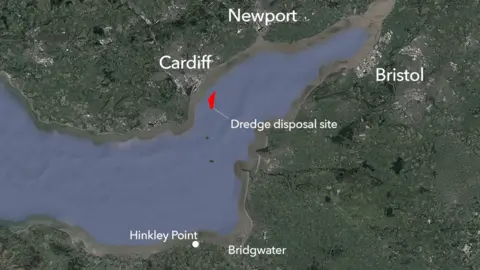Hinkley Point nuclear plant mud monitoring plan backed
 BBC
BBCA final obstacle to plans to dispose of mud and sediment off Cardiff Bay from a nuclear plant site has been overcome.
Thousands of tonnes of material needs to be dredged from the Hinkley Point C building site in Somerset, but there has been opposition from campaigners.
Natural Resources Wales (NRW) has now approved the monitoring plan.
"We're confident the proposed activity will not harm people or the environment and the material is suitable for disposal," said a NRW spokesman.
The developer wants to dispose of 300,000 tonnes of mud across the Bristol Channel in the Cardiff Grounds, a little over a mile out to sea from Cardiff Bay.
But campaigners claimed the mud could be contaminated with nuclear waste from the old Hinkley nuclear stations.
They have also alleged that testing of samples has been inadequate and there is insufficient evidence about how sea currents will move the sediment after it has been dumped.
 Reuters
ReutersJohn Wheadon, NRW permitting services manager, said: "We make sure activities like these do not harm marine environments, which are home to valuable wildlife and habitats and very important to our well-being and economy.
"We know this is a matter of great concern for many people, but want to reassure them that every element of the application was considered thoroughly."
The body has published a plan on how surveys of the disposal site will take place and how it will be monitored.
The work will be carried out by NNB GenCo, which was given a marine licence by NRW for the disposal of dredged material in 2014.
Samples from the proposed dredge site have previously been analysed by independent experts and NRW said these were found to be within acceptable limits.
The developers claimed that even if a person spent four hours each day on the shoreline, ate fish sourced from the area and inhaled any sediment on the shore, 90% of the radiation they would receive would be naturally occurring.
